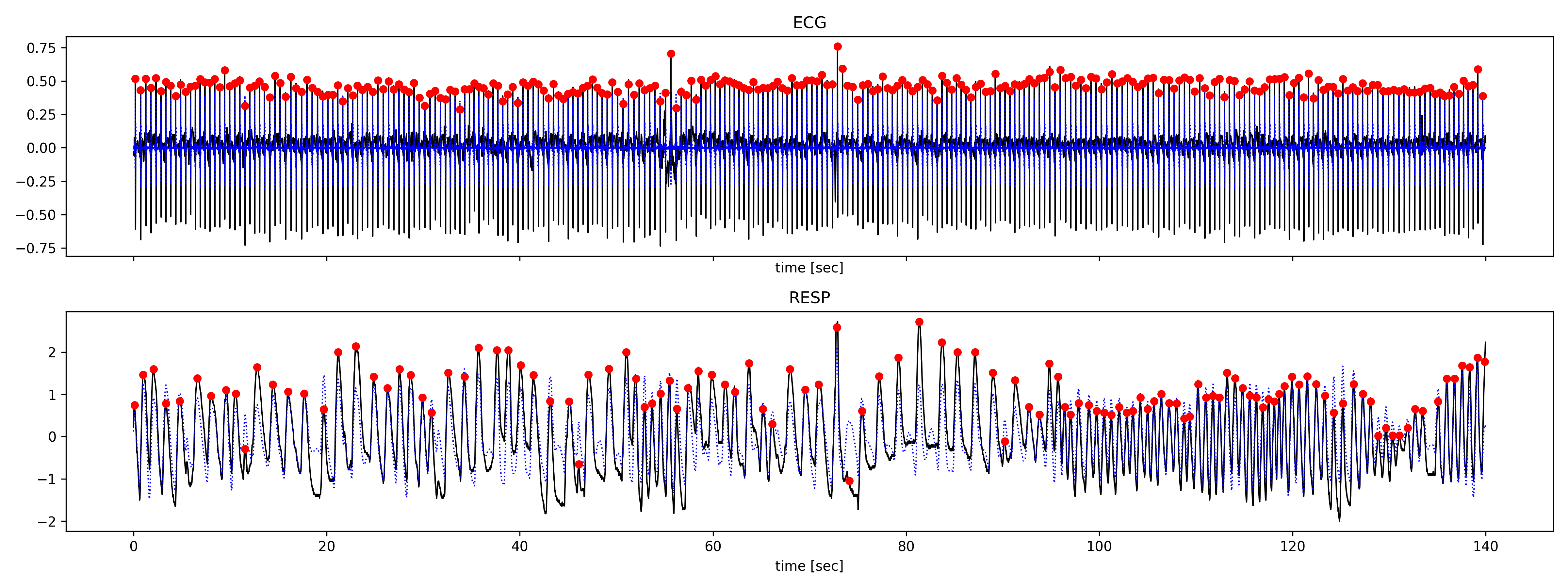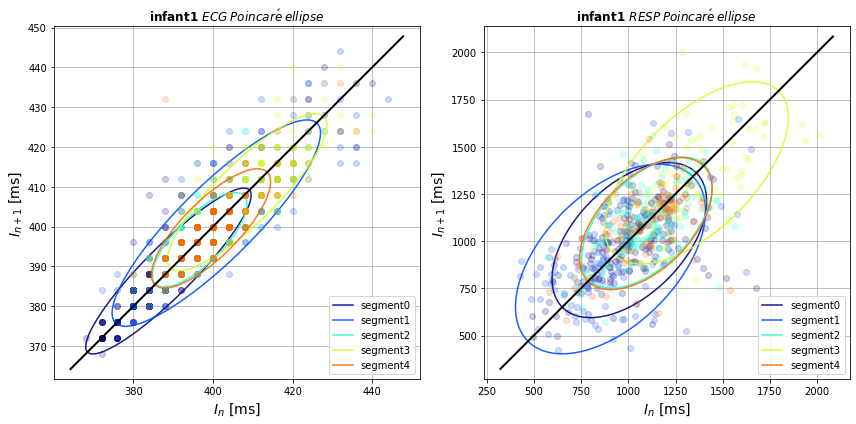picsdb
Overview
This repository contains a collection of Jupyter notebooks written in Python3 to analyze an open cardio-respiratory data set hosted on PhysioNet:
Preterm Infant Cardio-Respiratory Signals Database (picsdb)
Download and description here: PICS database
DOI: https://doi.org/10.13026/C2QQ2M
Original analysis of the database:
A. H. Gee, R. Barbieri, D. Paydarfar and P. Indic, Predicting Bradycardia in Preterm Infants Using Point Process Analysis of Heart Rate, in IEEE Transactions on Biomedical Engineering, vol. 64, no. 9, pp. 2300-2308, Sept. 2017. doi:10.1109/TBME.2016.2632746.
PhysioNet:
Goldberger, A., Amaral, L., Glass, L., Hausdorff, J., Ivanov, P. C., Mark, R., … & Stanley, H. E. (2000). PhysioBank, PhysioToolkit, and PhysioNet: Components of a new research resource for complex physiologic signals. Circulation [Online]. 101 (23), pp. e215–e220.
Aims
- Detection of ECG and respiratory cycles, i.e. ECG R-peaks and local maxima of the respiratory waveform
- Compute peak-to-peak interval statistics
- Compute Poincaré plots for ECG/RESP and quantify their half-axes
Peak detection
Detected ECG/RESP peaks marked by red dots, band-pass filtered signals as
dashed blue lines.

Poincaré plots
Example Poincaré plots for several segments of infant1 with fitted ellipses.

Source code
Source code, notebooks and example data are available at: GitHub repository
Please, cite this code:
Contributors
This repository contains research conducted as part of an Honours project at the University of New South Wales, Sydney:
- Emma O’Rourke (Student), ResearchGate
- Frederic von Wegner (Supervisor), other Projects
- Natasha Kumar (Supervisor), Lab
Requirements
- a working Python 3 installation, and the following packages:
- numpy
- scipy
- matplotlib
- wfdb (to read physionet data sets)
- xlrd (to parse .xlsx files)
- Jupyter (to run notebooks)
Comments
The full open data set contains recordings from N=10 subjects. This repository only contains the results of 3 subjects. To run the code, download and unzip the full data set from Physionet (link above) and copy the individual files into the subfolder preterm-infant-cardio-respiratory-signals-database-1.0.0.